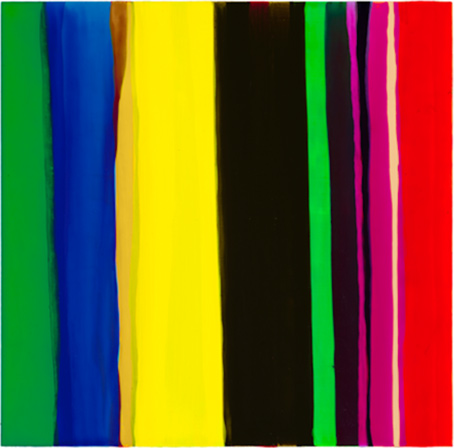
Art and Meditation
by Ann Landi | Sep 16, 2016 | Features
Slowing down, filtering out the noise, and allowing the mind to empty out can offer a tremendous boon to the creative process.
Meditation has for years enjoyed a reputation for its restorative powers and its abilities to sharpen the senses (as well as provide deep inner peace). The artists polled here have all come to practice one form of meditation or another—from following strict Buddhist conventions to practicing Asian brush painting to engaging in “walking” meditation.
Some will tell you that the process of making a work is in itself a form of meditation (and there has been some medical evidence to bolster that claim). Ty Zemelsky, in describing her “cut drawings” (above), says, “I work deliberately, warming up for as short a time as I can before I slip into a meditative state where I think that I am most alive, responsive, and unself-conscious, as opposed to the usual experience of watching myself live. Of course, when it is happening I do not know it. But I certainly know it when it is not happening. The meditative process of making repetitive movements, repetitive lines and shapes, becomes the breath and music of the drawing.”
Or, as Gina Telcocci succinctly puts it, “I don’t need no stinking meditation—making art is meditation.”
Hester Simpson
The first thing I do when I get to my studio in the morning is pull my spattered old ergonomic chair into a specific spot and meditate for 20 minutes. If for some reason I can’t spare 20, I’ll do 5. It’s more than a habit now; it’s a necessity.

Stripes, 2016, acrylic on wood panel, 12 x 12 in.
Meditating helps me move more directly into my painting than if I just walk in and start working. The simplest way to describe the meditation I practice is that I STOP. I sit in the same spot every day with my back to the wall and feet on the floor, hands loose in my lap while any and all thoughts float through my brain. My eyes are just about closed. The only difficult part of this meditation is in not allowing myself to get stuck on any one thought. But as I practice, I get a little better, very very slowly.
This STOPPING is sustenance for the functioning of my brain. Even if I haven’t sufficiently unscrambled my brain, it’s at least not as concerned about that condition. I move on.
My work is obsessive and it’s easy to get bogged down in it. After I meditate I look at what I’ve been painting. Ideas and decisions come more easily. I don’t endlessly judge my own judgments. I am less tentative in the handling of my materials and in making moves.
